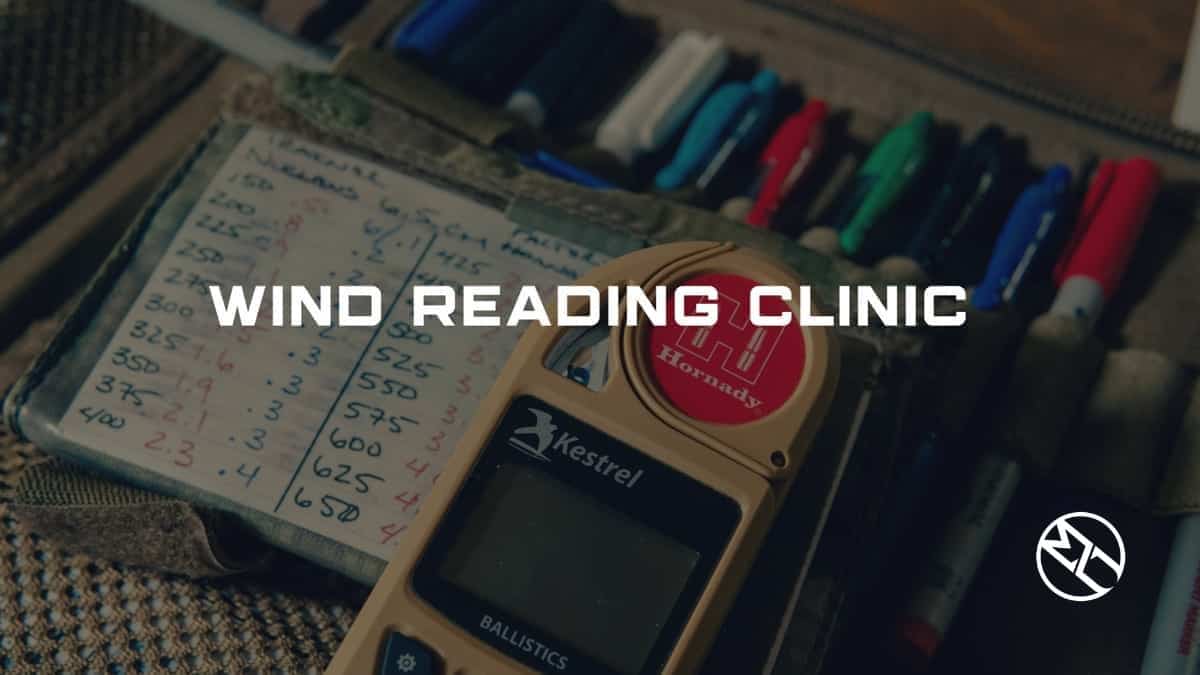
Wind Reading Clinic
Wind is undoubtedly the most intimidating variable to try to put your finger on in long range shooting. Admittedly, wind reading and calling is nothing more than an educated guess. The accuracy of your guess is subject to your knowledge, experience, attention to detail, and ultimately your confidence in your skills.
We’ll make sense of the phenomena of wind, how to feel it, how to read terrain, and how to program your senses to be as accurate as possible in your assessment of the conditions. We’ll show you our own process for establishing our final data point; the hold that we’re going to use to throw the bullet into time and space precisely just enough to have it blown into the center of the target.
What you will learn...
- Wind Theory and Science
- Methods of Establishing Wind Speed
- Methods of Establishing Wind Value
- Body-Calibration Exercises
- Gun Number and Hasty Solutions
- Cartridge to Wind Speed Thresholds
- Reverse-Wind Calling
Gear List
What should I take?
Safety
- Ear Protection
- Eye Protection (Clear Lenses)
Required
- Precision Rifle (<1 MOA)
- Rifle Optic with Adjustable Turrets
- Scope Tools
- Bipods (with Ability to Cant)
- Scope Level (Anti-cant Device)
- (2) Magazines (for those running DBMs)
- 150 rounds (Match Grade Ammunition)
- Support Bag (Rec. AG Gamechanger)
- Hunter/Sniper – Pint Size w/ Git-Lite
- Competitor – Shmedium Heavy Fill
- Rear Bag – OG w/ Git-Lite
- Rear Bag 2 – TAB Gear SM Rear Bag
- Note Taking Gear
- Ballistic Computer (Rec. Hornady 4DOF)
- Kestrel
Recommended Support Gear
- Pack
- Arm Board (Rec. Sunrise Tactical Gear)
- Magazine Carriers
- Rifle Cleaning Gear
- Shooting Mat
- Rifle Tools (Rec. Fix It Sticks)
- Shooter’s Belt
- Rifle Sling (Rec. Magpul MS1)
Nice-To-Haves
- Shooting Tripod
- Range Finder
- Chronograph (Rec. Magnetospeed)
- Selfie Stick/Mini tripod for Phone/GoPro
Personal Sustainment
- Weather Appropriate Gear
- Field or Camping Chair
- Sunscreen
- Bug Spray
- Water Source
- Snacks and Lunch
